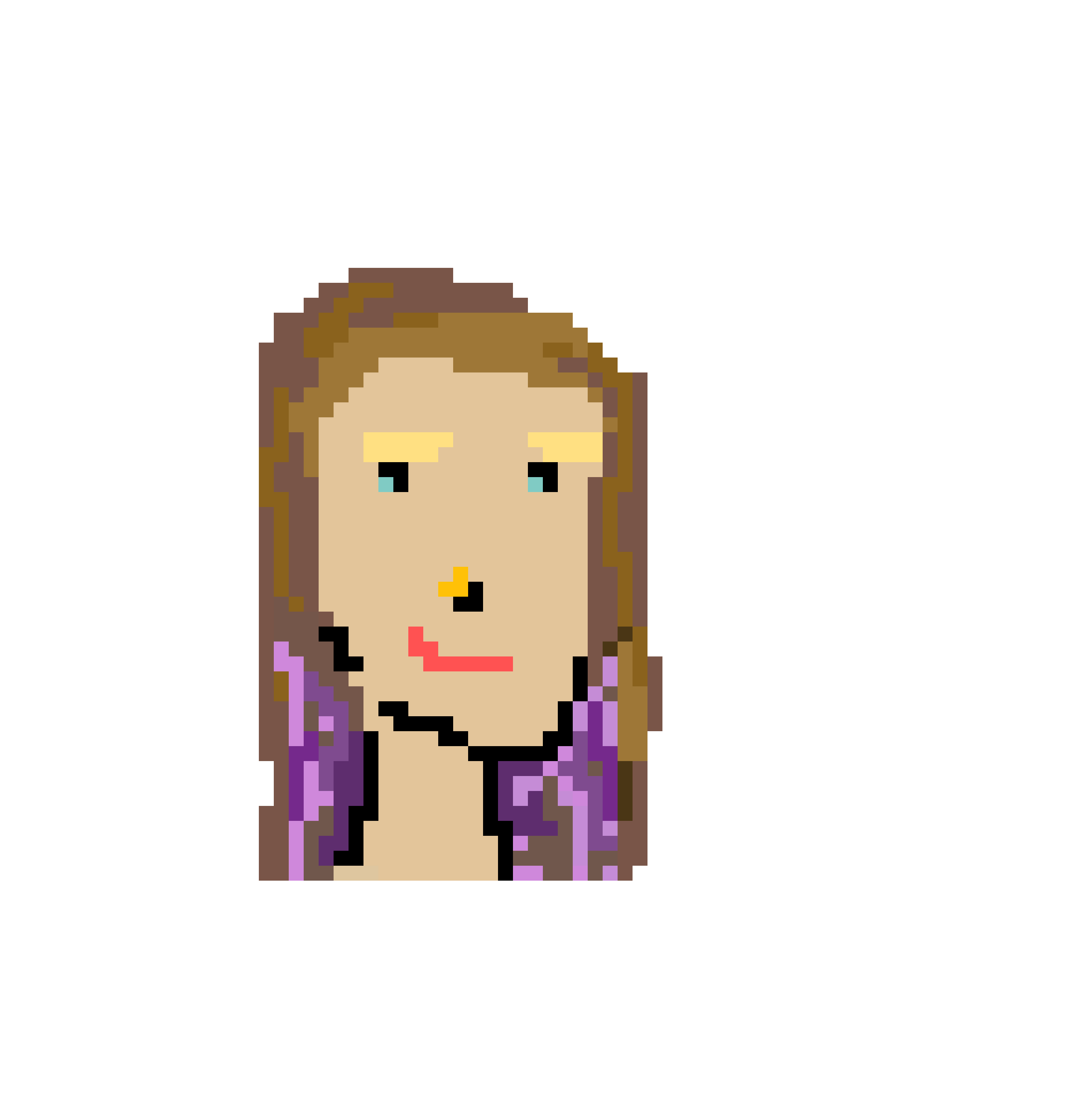

I enjoyed this project, especially because when someone saw what I was making over my shoulder, they were very confused. It has taken me a long time to figure out how to word my complete thoughts on this project. When they asked what I was doing, I explained CryptoPunks and how they are used and traded on the internet. They were incredibly surprised to see how much they can be sold for — as was I when we first learned about them. I also shared the Pieces of Me exhibition with them so they could better understand NFTs. This project seemed to be in the same vein as this piece, called moreToMe.txt by Cassie McQuater, in the referenced exhibition. It serves as a critique of cryptocurrency and the perceptions of it as well as its emerging popularity.
This project also showed me just how much the “hype” surrounding cryptocurrencies and NFTs makes them of value. “For fans of collectibles, it’s clearly a version of trading cards or something similar,” (10 things to know about CryptoPunks, the original NFTs). Things can accrue value when they are believed in. While these things are not understood by all, they are valued by enough people who have money to translate value.
I enjoyed the process of sort of creating and claiming a cryptopunk on my own. It seems this desire to make things more personalized to better connect with them is not uncommon. In fact, there are many different versions of edited CryptoPunks. One of the many stuck out to me — they are called BespokedPunks. These are punks similar to those we created for class. When you purchase one, the artist will make a customized CryptoPunk for you. These are “punks for the people, by the people.”
This creation is interesting as it makes me think more about the implications of the existing CryptoPunks. The lack of minority representation is certainly apparent among the originals, do these other adaptations work to remedy that fact in their own ways?
I also wanted to reflect on the fact that I had a lot of difficulty making my punk actually punk while staying true to what I look like — or sort of what I look like.
The most “punk” thing I have on me appearance-wise is a nose ring. I tried to depict this, but it was hard to see on a pixelated person. I tried to invert the “ring” so it stuck out a bit more, I think I achieved the effect I was hoping for.
After creating the basics of my appearance, I decided to experiment a bit. I have always wanted to dye my hair, but I have never committed to it. I tried to dye my crypto hair how I theoretically would in real life as a sort of trial run. I do like it and I think it definitely better fits the punk aesthetic.
I wish I had added more jewelry to the punk because of how often I wear it and because of how I feel more like myself when I do wear it. This project was also interesting because of how much we as humans relate appearance to identity, as well as how we can connect to others or not based on their appearance. For example, if someone else has a nose piercing I feel like I can already relate to them in some way, or if someone likes to wear overalls because they’re like fashionable sweatpants, then I also might relate to them more easily. Very specific example, but do you get my point?
This creation helped me feel in control of how I was presenting myself on the internet in the pixelated self portrait. This also brings me to the fact that so many individuals have been taken advantage of when it comes to how they are portrayed on the internet, this is especially the case when minoritized bodies are depicted on the internet.
This concept reminds me of something that I researched in the midterm project. Body Anxiety is an online exhibition curated by Leah Schraeger and Jennifer Chan. This project helps minoritized bodies, specifically women and gender-queer individuals, reclaim how they are depicted on the internet, through their own lens, rather than that of the male artist as is traditional. “Throughout art and film history, the female body and nude has been an ongoing subject in male-authored work. More often than not, the woman’s body is capitalized on in these works while their voice is muted.” To me this sort of felt like a PG version of this exhibition.